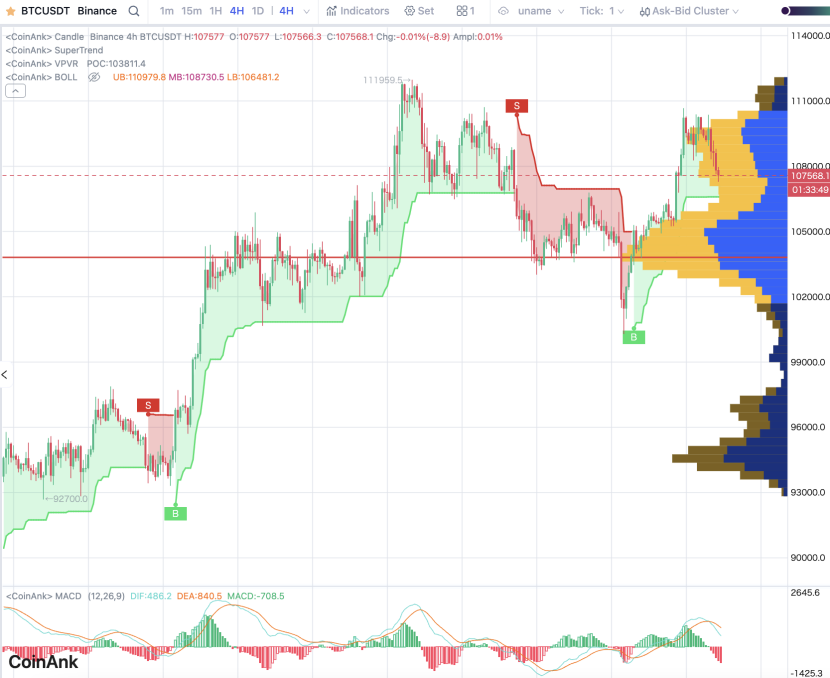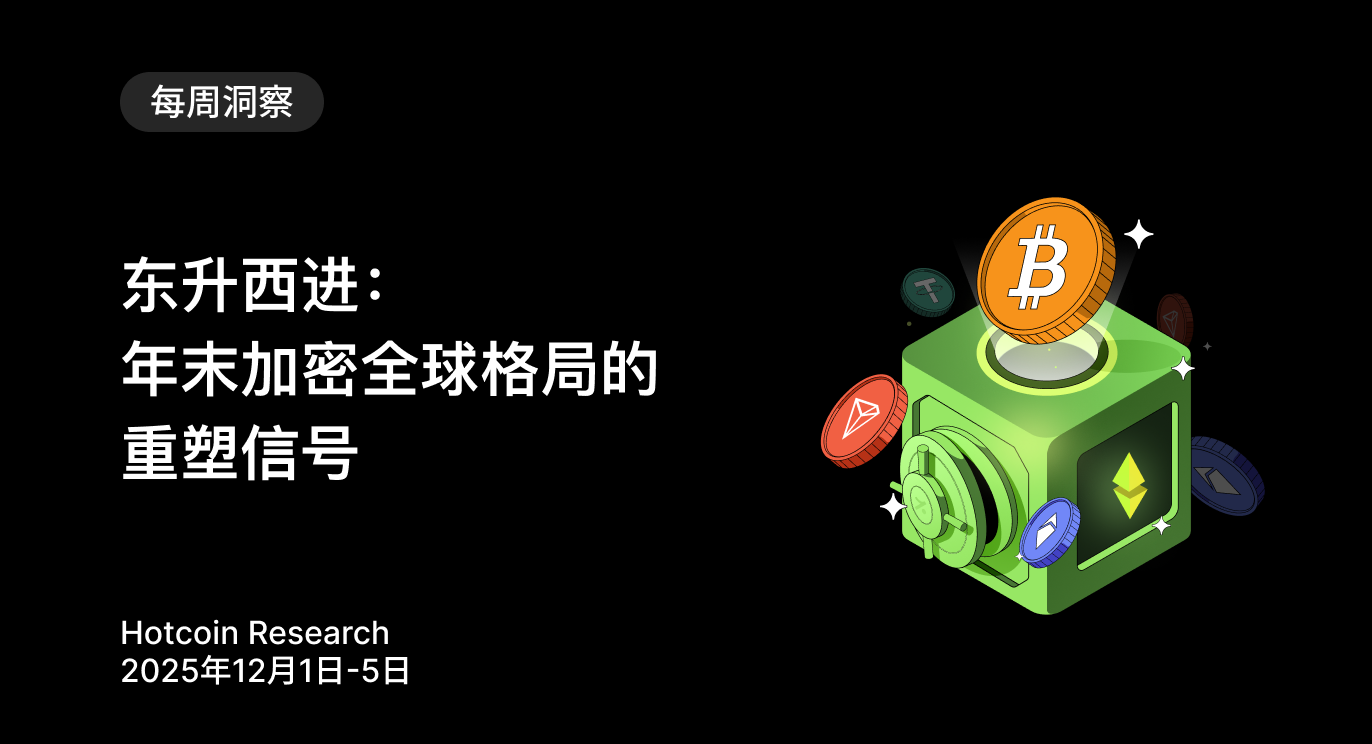Federal Reserve's interest rate cut expectations delayed, US stocks give back gains; centralized institutions have controlled 31% of the circulating supply of BTC.
Macro Interpretation: The macro economy provides fundamental support for crypto assets, but the expectations game is somewhat complex. The latest US CPI for May showed a slight increase of only 0.1% month-on-month, with core CPI at 2.8% year-on-year, both below market expectations, indicating a continued moderate decline in inflation. Following the data release, US Treasury yields fell, and the dollar weakened, boosting traditional risk assets. Some market analysts believe that the slowdown in inflation may lay the groundwork for Bitcoin to hit higher levels by the end of the year, with institutional confidence recovering and state-level Bitcoin reserve projects potentially accelerating capital inflows. However, the reality is that the crypto market has reacted relatively restrained, with the Federal Reserve likely to maintain interest rates at its June meeting, and the window for rate cuts generally pushed back to after September, with policy uncertainty continuing to suppress bullish momentum.
New progress has been made in US-China trade negotiations, with both sides reaching a principled consensus on implementing the leaders' agreement, injecting stability expectations into the global market. More intriguingly, the dynamics of US domestic politics are at play: Vice President Vance has recently been actively mediating the relationship between Musk and Trump, emphasizing the "hope to ensure Musk supports the presidential agenda." Considering Musk's influence in the tech and crypto fields, this political alliance could have far-reaching implications for future policy directions. Concurrently, the US and UK are rapidly advancing a "cars for agriculture" trade agreement, reducing UK car tariffs in exchange for access to the US agricultural market, showcasing the Trump administration's efficient and pragmatic economic strategy.
The regulatory and compliance processes are showing "East-West divergence," and the wave of institutionalization is irreversible. Singapore's dramatic shift in regulatory policy has caused industry turmoil, with its "no transition period" new rules significantly increasing compliance costs, forcing some Web3 companies to exit the market. In contrast, the Western regulatory framework is accelerating its formation: Société Générale announced it will issue a US dollar stablecoin in July, and the G7 summit plans to promote multinational crypto asset regulatory cooperation. This divergence confirms that the global crypto ecosystem is undergoing a brutal compliance screening, with the deep involvement of traditional financial giants paving the way for institutional development in the industry.
The expansion of institutional dominance is reshaping the market landscape, with stablecoins becoming the vanguard of capital entry. The latest data shows that centralized institutions (including governments, ETFs, and listed companies) have controlled 31% of the circulating supply of Bitcoin, valued at $668 billion, a 924% increase over the past decade. Exchanges account for a significant portion, with the top three entities controlling 65%-90% of the holdings, indicating that early institutions are still dominating the market structure. Notably, the Bitcoin held by the government "rarely moves and is decoupled from price cycles," with its potential influence akin to a sword of Damocles. Meanwhile, the market capitalization of stablecoins has surged to a record $228 billion, increasing by $33 billion (17%) in a short time, becoming the core channel for traditional capital entry, with its expansion directly benefiting from clearer US regulations and the explosion of payment scenarios.
Bitcoin hovered around $107,700 in June 2025, down about 2.3% from previous highs, while Ethereum stabilized around $2,800. On the surface, the crypto market is experiencing high-level consolidation, with declining trading volumes indicating cautious sentiment. However, a deeper analysis reveals multiple forces driving the market toward a new situation. The pre-market decline of US crypto concept stocks (such as Coinbase and MicroStrategy, down 1%-2%) also reflects market concerns.
In the short term, Bitcoin's consolidation above $100,000 is a natural process of the market digesting policy expectations and institutional reallocation. In the medium to long term, three trends are irreversible: the proportion of institutional holdings crossing the critical point (31%) changes the logic of market volatility; the compliance-driven expansion of stablecoins continues to broaden capital channels; and global regulation is shifting from confrontation to institutionalization, which will eliminate speculative capital. It is worth noting that the Singapore-style regulatory crackdown suggests that rising compliance costs will become the norm, while the "silent state" of the US government's Bitcoin reserves may create a divergence impact in the future.
As traditional financial giants deeply bind the crypto market through stablecoins and ETFs, as sovereign nations incorporate Bitcoin into their balance sheets, and as political leaders actively embrace crypto opinion leaders, these signals collectively point to one conclusion: crypto assets are no longer outside the mainstream system but are seeking a new balance within the institutional framework and capital game. Whether Bitcoin can break through the $120,000 mark may depend on the timing of inflation decline and the Federal Reserve's shift, but longer-term price discovery will depend on the evolution of institutional holding structures and the final definition of compliance paths by geopolitical factors. The market is cautiously awaiting the next opportunity for consensus fragmentation.

BTC 4H Market Analysis:
According to CoinAnk analysis, the market analysis report is as follows:
Main support level: 106,462.07 USD (S1)
Main resistance level: 109,512.07 USD (R1)
Current trend: Bearish consolidation
- Technical indicators summary:
Moving average system: A bearish arrangement has formed, with a weak short-term trend. The current price is below all moving averages, indicating strong resistance above.
MACD: The death cross state continues, with bearish momentum prevailing.
BOLL: The price is running close to the lower band (106,481.23), with a %B value of 0.24%, nearing the oversold area, but has not effectively broken through the lower band support. The middle band (108,730.52) is sloping downwards, indicating a bearish mid-term trend.
RSI: RSI6 (29.51) has entered the oversold range, but RSI12 (45.22) and RSI14 (47.44) remain in the neutral zone, showing no significant divergence, and caution is needed for a short-term rebound.
KDJ: K (17.81) and D (31.08) are running at low levels, with J value (0.00) at the bottom, indicating a potential short-term rebound demand, but confirmation with other indicators is needed.
- Capital and volume-price analysis:
Funding rate: 0.00748900% (neutral), with no extreme bullish or bearish sentiment.
Trading volume: Recent declines have been accompanied by increased volume (e.g., trading volume near the 24h low surged to 76,338.48), indicating strong bearish forces. During rebounds, the volume is insufficient (e.g., the latest 4h candlestick trading volume was only 43,730.984), lacking sustained buying support.
Capital flow: Contract funds saw a net outflow of 1,083.5M USDT in 24h, with a continuous outflow in the short term (5m-12h), indicating leveraged funds are exiting.
Spot funds experienced a net outflow of 140.1M USD in 24h, but there was a slight inflow in 4h/6h, which may signal bottom-fishing.
- Key patterns and behaviors:
Candlestick patterns show consecutive bearish candles breaking below the previous low (107,259.30), forming a descending channel. The latest 4h candlestick closed with a long upper shadow (108,515.1→107,358.40), indicating that the rebound faced resistance, with bears still in control.
Analysis Result:
Direction: Cautiously wait for a rebound to short (need to be wary of oversold rebounds). Reminder: If the price stabilizes above 108,730 (MA20) or RSI6 quickly rebounds above 40, positions should be closed and observed.
Risk Warning: Current oversold signals (RSI6, KDJ) may trigger a rebound, strict stop-loss is necessary!
免责声明:本文章仅代表作者个人观点,不代表本平台的立场和观点。本文章仅供信息分享,不构成对任何人的任何投资建议。用户与作者之间的任何争议,与本平台无关。如网页中刊载的文章或图片涉及侵权,请提供相关的权利证明和身份证明发送邮件到support@aicoin.com,本平台相关工作人员将会进行核查。




